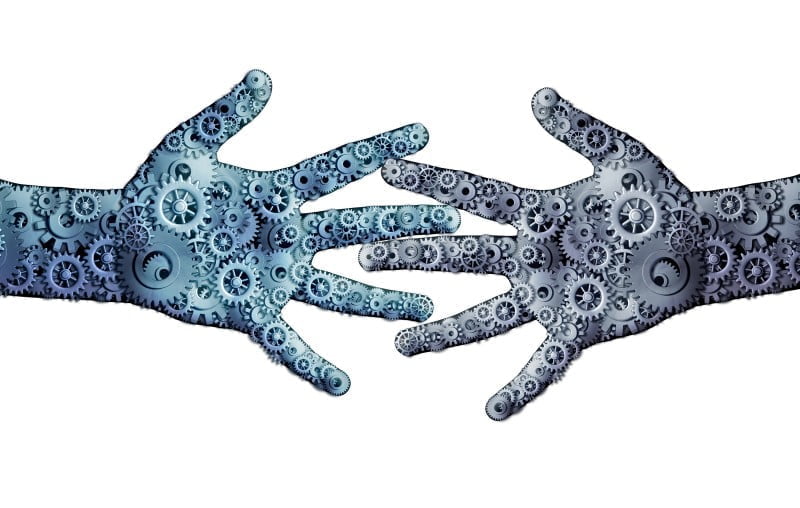The processes for IT, facilities and human resources (HR) are broadly similar and do overlap, such as with commencement and exit procedures, and can easily be brought together in a single tool to manage. However, even when doing so and when supporting departments have their own tools and processes, it is not always clear to end users where they should turn for support. For instance, in practice the management of mobile phones can be sourced to each of these departments, or a combination thereof. The collaboration between IT, facilities and HR, also called shared service management, cuts costs and improves the quality of service for end users.
Shared service management growth model
The shared service management growth model outlines four phases in the change process from the compartmentalized IT, facilities and HR departments to shared service management. This model helps guide organizations incrementally through implementations every day.
Phase 0: nothing shared. In phase 0, each department uses its own tool. Some organizations choose to have each department work in its own service management environment as the first step toward shared service management. Sharing software leads to an initial coordination of processes, but also immediate savings in terms of license and maintenance costs. It also helps departments who have not yet implemented a tool, other than maybe Outlook or Excel, to get used to using a professional service management tool.
Phase 1: shared tool. In this phase, the departments work as similarly as possible. Not only do they use the same software, but also the same shared service environment. Agreements must be made about the terminology used and how the tool is set up. Departments that use their own tool want to maintain their inventoried assets and high-quality calls (migration), and screen off process information.
Phase 2: shared service desk. True collaboration starts in the second phase: The end user can turn to a single service desk for all services, while at the back end each department works in its own way. The previous phase’s need to screen off information slowly decreases and the department focuses on what is important to the end user.
Phase 3: shared processes. In the final phase the departments’ procedures are fully coordinated. In a shared service management solution, only sensitive HR information is screened off so not all operators can access it.
The path to shared service management
Wanting to prepare your organization for shared service management will, of course, have an impact on the organization. Be advised that you may face changes in information management, system settings, roles and filters.
Shared master data
From the first phase onwards, the departments use the same basic data. This means that the departments have to agree upon which information is transferred. Examples include importing callers’ personal details from an external source, such as Active Directory. For data migration it is important to take care when transferring the information.
System settings
If you are going to collaborate in one tool, you have to think about how you are going to set up your application. How will you use the functionalities? How will you make sure that calls end up with the right department? In practice, you will quickly reach agreements on how to use the functionalities.
However, you should make sure to discuss the following topics:
- Supporting files such as person and branch details
- News items and the knowledge base
- Functional settings such as mandatory fields and adjusted names
- Drop-down lists, such as call type, impact, duration and status
- Audit trails for fields such as time spent and operator
- Optional Object cards and fields
- Special events in the context menu
Screening off data
Users do not necessarily need to be able to see all cards. Screening off certain information also makes your interface with the service management solution more compact and clearer. An example: Software cards are interesting to the IT department, but probably not to facilities and HR. And inventory and fleet management probably aren’t interesting to IT. Screening options are especially important in the second phase of the SSM growth model. In following phases of collaboration, the departments gradually reduce the strict filters.
Roles
Roles let you determine per process which cards are relevant to the operators involved. In addition, you can use authorizations to determine which features are available to an operator, such as the authorization to link a call to an object or room.
Filters
Filters hide certain cards in the index. This lets departments share a module without seeing each other’s cards, letting departments share a tool without seeing each other’s details. Filtered cards cannot be accessed by operators and are, therefore, not displayed in search results, selections and reports. The category filter works based on the selected category and/or subcategory. The operator filter works based on the operator, manager or contact field. The service management solution can show the operator their own cards, their group’s cards or cards for all operators in a group. Users can also set up which operators can see cards without an operator or category. Furthermore, each filter also lets the most recent changer of the card see the card. This lets the last operator make a quick change or correction if the card was incorrectly routed or categorized.


